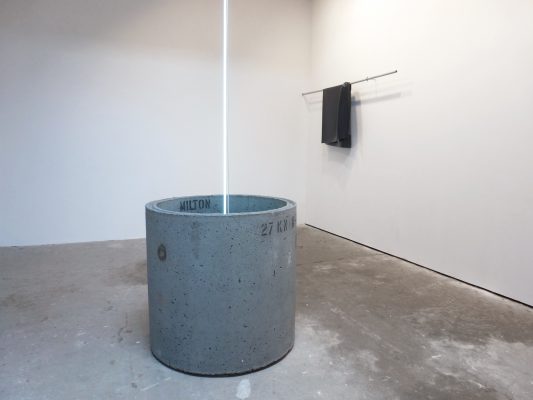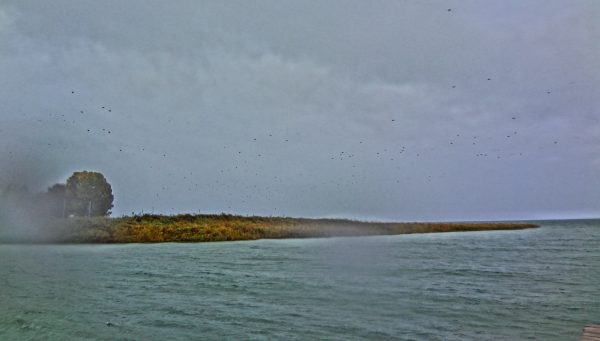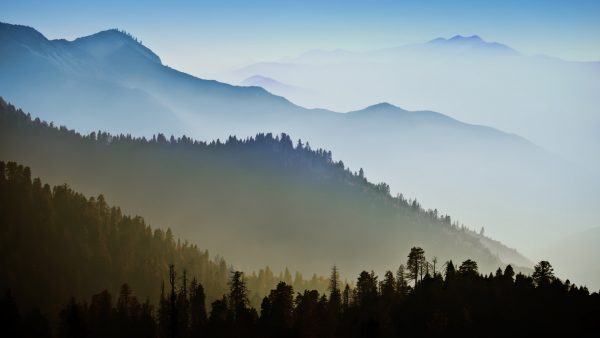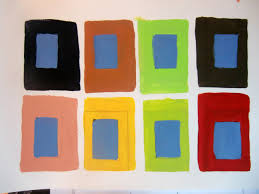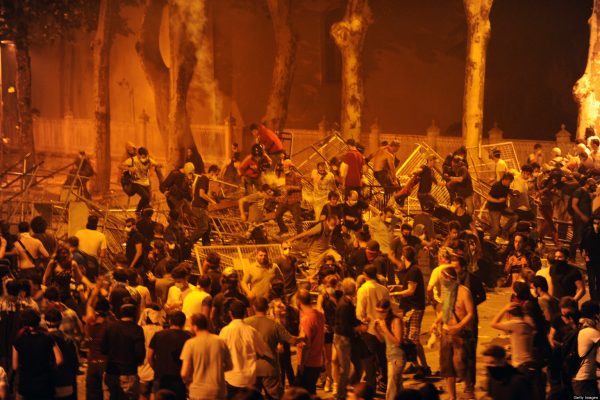Awst & Walther are a husband and wife team who create multi-disciplinary art works which range from building a huge wall of melting ice outside the German Embassy to a performance in which the movements of two nude figures wearing ancient Grecian helmets twitch at a grey curtain.
Their latest exhibition, Components, at the Hannah Barry Gallery, brings together four years of sculpture and performance work, shedding light on ongoing thematic preoccupations and material attitudes in the artists’ work. This group of works reveals an acute fascination with corporeality, temporality and spatiality, and the experiences and situations that occur from different combinations of these aspects.
The artists employ an array of unconventional and alternately austere and sumptuous materials – gelatine, glass, ice, gold, feathers, tar, concrete, neon, are all used in making painting, sculpture and performance to explore our attitudes towards beauty and human behaviour. Theirs is a collaborative endeavour focused on creating knowledge and meaning, towards a better understanding of our world.
Manon Awst (b. 1983, Wales) and Benjamin Walther (b.1978, Dresden), have shown at Junge Kunst (Wolfsburg), Kunstraum Aarau (Switzerland), Künstlerhaus Bethanien (Berlin), Nassauischer Kunstverein (Wiesbaden), Cass Sculpture Foundation (Goodwood) and the National Museum of Wales (Cardiff). Here, they answer questions put to them by journalist and critic Francesca Gavin.
APPLE. Explain the motif of the apple in your work.
We like the ambivalence surrounding the apple – it represents an act of corruption, the fall from grace, but also the beginning of civilisation and the birth of love. We used it once in our piece Temptation where it was placed next to a hand grenade. Both objects are golden.
BERLIN. How does it influence the content and aesthetic of your work?
Berlin is fragmented through its history. There are breaks and interruptions that make it unique. We feel challenged by that. Aesthetically, we love its dark, stark, cold side – we can relate to this.
COLLABORATION. Tell me about your working processes.
We admire each other and like spending time together. From the moment we met we had this need to make things together – it felt very natural. Being in the studio every day is important to us, to have time and space.
DESIGN. How does Manon’s background in architecture influence the work?
Architecture is all about how we experience the world – the spaces in which we live and breathe. Manon was very lucky to be taught by inspiring, great professors like Dalibor Vesely and Tom Emerson who opened her eyes to how architecture is weaved into the pattern of everyday life. This knowledge and awareness is brought into the work very strongly.
EXPERIENCE. What is vital to you about the real space, experiential element of your work?
This is what it’s all about. It’s important for us that what we make is rooted in real human situations, and without that, there’s nothing. It’s what makes it genuine.
FATALITY. Tell me about the references to graves and death in some of your pieces.
Death is a huge theme. Society is always confronted with it. That we will die one day is the only thing we all know for sure. Therefore, actually, how can death not always be there in the back of our minds?
GOLD. What do you find inspiring about the alchemical nature of gold?
Gold elevates. In alchemy it’s the purest material. It has something sacred and eternal, which completely draws you in. We would like to have more of it.
HOLES. Explain their role in your work.
Holes or voids represent what cannot be explicitly articulated, what is left open to be investigated. They always question what’s on the other side. There’s this sentence in a play we wrote that describes the hole becoming wider and wider, deeper and deeper until it envelopes everything, until there’s nothingness. Holes hold an incredible sense of possibility.
IDEAL. What attracts you to ideas about beauty and the ideal?
The false sense of meaning that society gains from this. It represents a strange form of denial. We think society needs a radical rethinking of values…
JELLY. What about gelatine do you find interesting as a material?
It’s skin and bones transformed for commodity purposes. So in a strange way it is a metaphor for the modern human being. It is a visceral material and can be cast into any form. Using it is almost re-modelling something of the body itself.
INFLUENCES. What artists and artworks have influenced your practice the most and why?
Artists who are bold and curious, and who’s work we always return to. We are broadly influenced by visual artists, writers, musicians, filmmakers, philosophers – figures who make us discover something new about the world.
LANGUAGE. What do you find interesting about the creation of your own creative language?
To formulate something very precisely is our intention – we think this is how the creative language takes shape.
MATERIALS. There is a strong focus in your work on the nature of materials. How and why do you choose the materials you work with?
The use of a specific material comes from the need to communicate on a very elementary level. It’s often not a matter of choice.
NOTES. Are writing and scripts part of the process of creating your performance work?
Yes, they are a way of getting our thoughts and discussions manifested so that they don’t get lost in the process of making. We often come back to a thought after some time – this is because it’s all jotted down or sketched somewhere.
OPTIMISM. Do you see your work as optimistic?
We wouldn’t like to brand our work as optimistic – we never think in these categories. Energy is more interesting for us.
PERFORMANCE. How do you conceive your performance works and what holds them together?
First of all, we call our performance work ‘Performative Investigations’. This puts focus on the process and exploration rather than on presentation, which liberates us. Ultimately we consider everything we do to be work in progress – it’s all connected.
QUEST. Do you see part of the motivation behind your practice as the quest for the sublime?
No, it’s much simpler. We want to make the most of being human and part of society. Art provides us with the means to discover, understand and contribute.
REMNANTS. What do you find interesting about the remains and documentation of your performance pieces?
That they gain a life of their own after the performance has taken place. People are open to interpret the fragments as they will, and they sometimes gain new meanings.
SEXES. What interests you about the duality of male and female in your work?
This duality is unavoidable in our working together, but gender is not so interesting for us.
THEATRE. How important is the location and sense of space in your performance?
We are sensitive to space. It influences in every case and sometimes even directly instigates a performance. It really depends.
UTOPIA. Many of your shows have had utopian or dystopian titles. Why?
We hate the word utopia. It’s worn out and always disappointing. But of course we can’t lock ourselves away from having dreams and visions.
VISCERAL. What do you find interesting about the visceral nature of your sculptures?
That they embody something very human.
WHITE. What has drawn you towards white and black? Explain the largely monochrome nature of your works.
We love de-saturation, which maybe comes from the places we grew up. But we also love colour.
EXtraction. How do your drawing pieces fit with your practice?
They are notes, reminders, a way of working through ideas.
Yesterday. What is the role of history and the past in your works?
History is unavoidable – we are part of it, every moment.
ZYMOSIS. What do you find interesting about ideas of destruction and decay in your performance works?
That it represents time passing, death, and the very nature of being.
